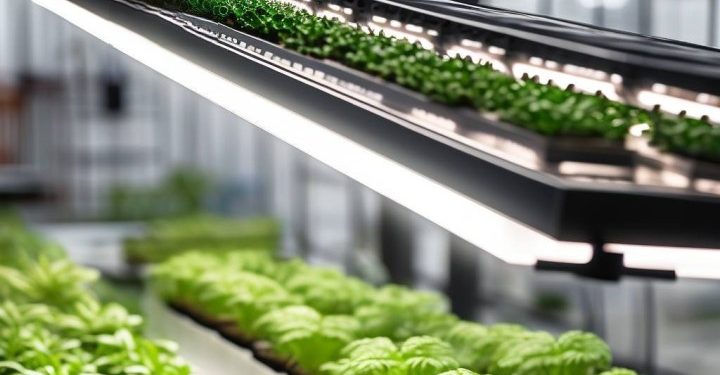In the realm of modern agriculture, LED lighting technology is revolutionizing greenhouse operations. As a crucial tool for enhancing plant growth, yield, and energy efficiency, LED lights are becoming indispensable for anyone serious about sustainable and profitable farming.
Advantages of LED Lights Over Traditional Lighting
Energy Efficiency: LED lights are highly energy-efficient, consuming significantly less power compared to traditional HPS (High-Pressure Sodium) or fluorescent lights. This efficiency translates to considerable savings in operational costs, making them a financially sound investment.
Longevity: With a lifespan often exceeding 50,000 hours, LED lights outlast traditional lighting solutions, reducing the need for frequent replacements and lowering maintenance costs.
Customizable Light Spectrum: LED technology allows for precise customization of the light spectrum, which is vital for meeting the specific needs of different plants and growth stages. This adaptability ensures optimal plant health and productivity.
Lower Heat Emission: LEDs emit significantly less heat, reducing the reliance on additional cooling systems. This not only conserves energy but also minimizes heat stress on plants, promoting healthier growth conditions.
Types of LED Lights for Greenhouses
Selecting the appropriate type of LED light is crucial for achieving desired outcomes in greenhouse environments. The primary types include:
Full-Spectrum LEDs: Mimicking natural sunlight, these lights are suitable for all stages of plant growth and ideal for greenhouses cultivating a variety of plants.
Red and Blue LEDs: Red light enhances flowering and fruiting, while blue light supports vegetative growth. These LEDs are highly efficient for photosynthesis, tailored to the specific growth needs of different plant types.
Supplemental LEDs: Used to augment natural light, these LEDs provide additional illumination during cloudy days or extend daylight hours, ensuring consistent light availability.
How to Choose the Right LED Lights for Your Greenhouse
Light Spectrum Requirements: Different plants have unique light spectrum needs. For instance, leafy greens such as lettuce and spinach thrive under blue light, while flowering plants like tomatoes and peppers benefit from a higher ratio of red light.
Intensity and Coverage: The intensity of light, measured in micromoles per square meter per second (µmol/m²/s), is vital for plant health. Full-spectrum or customized spectrum LEDs should be chosen based on specific plant requirements.
Energy Consumption and Efficiency: Opt for LEDs with high photosynthetic photon efficacy (PPE) to maximize the efficiency of light in promoting photosynthesis.
Durability and Lifespan: Investing in high-quality LEDs with a long lifespan ensures durability and reduces long-term costs. LED lights with a lifespan exceeding 54,000 hours and less than 10% light attenuation are highly recommended.
Installation Tips
Proper Spacing: Ensure even light distribution by correctly spacing LED lights. Professional light distribution proposals can assist in achieving optimal results.
Height of Hanging: Adjust the height of LED lights according to the greenhouse canopy, planting racks, and workbenches for optimal light penetration.
Wiring and Safety: Secure all wiring to prevent electrical hazards, using waterproof and dustproof fixtures to protect the lights. LED lights certified by DLC, CE, and ETL, with an IP65 waterproof rating, offer enhanced safety and reliability.
Case Studies: Successful Implementation of LED Lights in Greenhouses
Case Study 1: De Ruiter Seeds, Netherlands
- Increased Yield: A 20% increase in tomato yield.
- Energy Savings: A 40% reduction in energy consumption.
- Improved Quality: Enhanced color and taste, leading to higher market value.
Case Study 2: Gotham Greens, USA
- Faster Growth: A shortened growth cycle by 10 days, allowing for more harvests annually.
- Enhanced Nutritional Value: Higher levels of vitamins and antioxidants in lettuces.
- Lower Heat Stress: Reduced heat emission leading to improved plant health and yield.
Conclusion
LED lights are transforming greenhouse farming by offering energy-efficient, customizable, and durable lighting solutions. Understanding the different types of LED lights, their benefits, and quality considerations is essential for maximizing the potential of greenhouse agriculture. By adopting advanced LED lighting, greenhouse farmers can enhance productivity, reduce environmental impact, and achieve sustainable growth.










